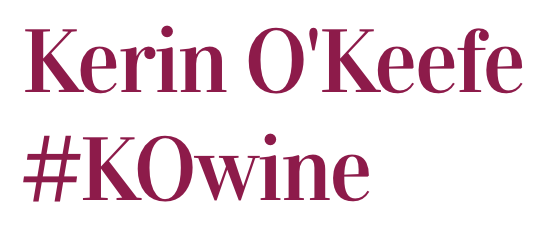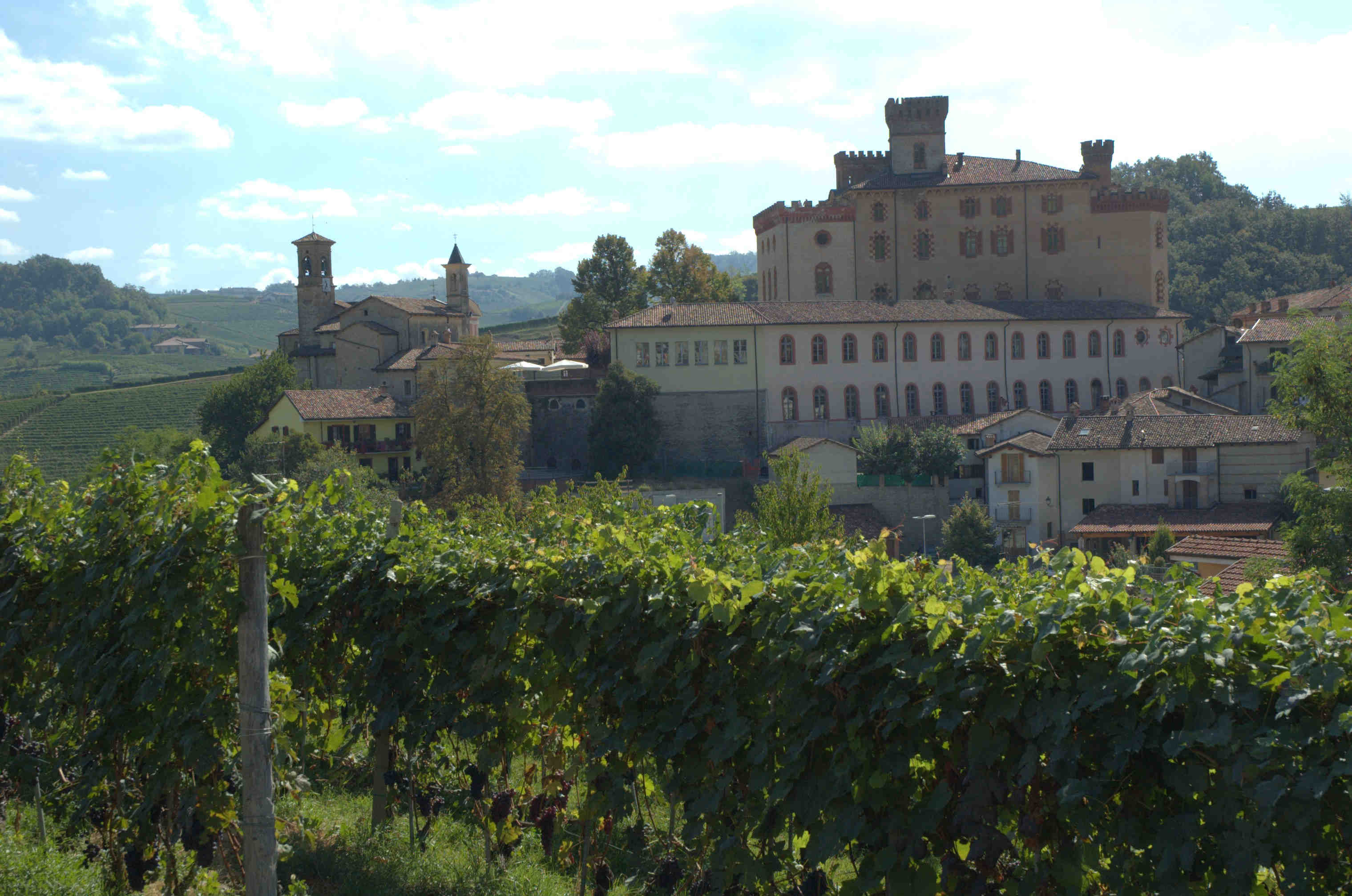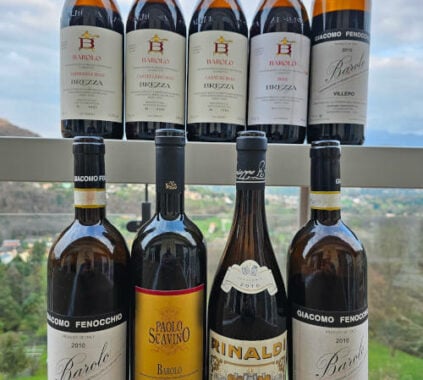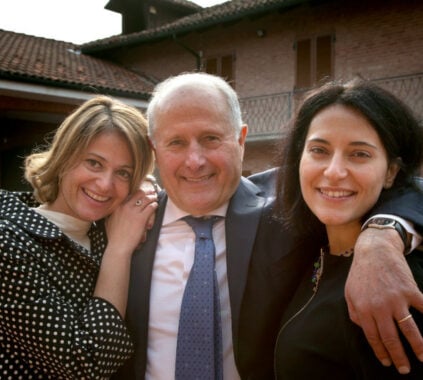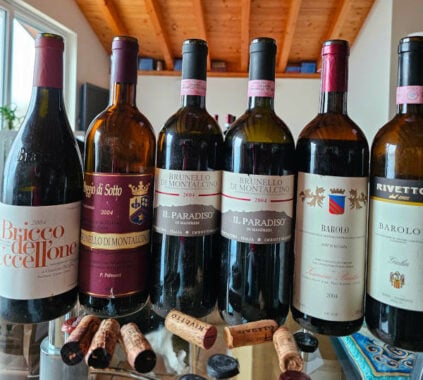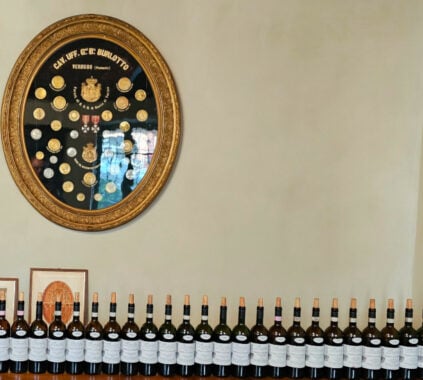Having recently returned from Barolo where I blind-tasted over 300 of the just released 2012s, it’s time to weigh in on the vintage, which will be hitting the US market over the next few months. Even though 2012 isn’t a great vintage, a number of producers produced very good, balanced Barolos. Most don’t have age-worthy structures, offering instead early appeal, but the best will offer fine drinking over the next decade or longer.
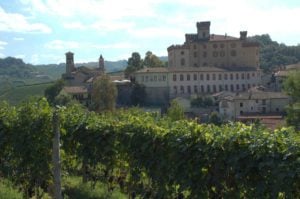
© Paolo Tenti | Castello di Barolo
Due to the erratic growing season, the 2012 Barolos don’t have the full-bodied structures of recent vintages. However, generally speaking they do boast succulent fruit, refined tannins, fresh acidity and balance. They also demonstrate a welcome return to more restrained alcohol levels: 14 and 14.5% compared to the hefty 15% avb commonly found on 2011 Barolo labels (and to a lesser extent the 2009s). While they are already accessible, top 2012 Barolos should age well to the ten-year mark or a little longer.
From a weather perspective, 2012 wasn’t an easy year and producers I’ve spoken with say their Nebbiolo production was 20–30 percent less than normal. The year started off with one of the coldest, wettest winters in decades, with abundant snowfall, that postponed the vegetative cycle. Cool, wet weather continued into March and April while May saw both higher temperatures as well as rain. Rain lasted into early June when flowering was taking place, resulting in reduced fruit set (the number of berries formed), which in turn led to lower yields.
Temperatures shot up later that month, and the rest of the summer saw high temperatures and little rainfall, but the water reserves accumulated from snow and rain helped against heat stress. Hailstorms over the summer also caused losses for some producers, but the damage wasn’t significant.
Rain at the end of August and in early September gave relief to Nebbiolo vines. The grapes also benefitted from sharp day and night temperature changes for the rest of September that are crucial for aromas and grape maturation in this fickle variety. Most producers started the Nebbiolo harvest in early October.
Because of the erratic growing season, the 2012 Barolos don’t have the full-bodied structure of recent vintages. However, generally speaking, they boast succulent fruit, refined tannins, fresh acidity and balance. They also demonstrate a welcome return to more restrained alcohol levels: 14% and 14.5% compared to the hefty 15% abv commonly found on 2011 Barolo labels (and to a lesser extent the 2009s). While they are already accessible, top 2012 Barolos should age well to the ten-year mark, some a little longer.
“2012 Barolo doesn’t have the structure of the 2011 or the 2013 [to be released next year], but it’s already approachable and enjoyable,” says Maria Teresa Mascarello of Cantina Bartolo Mascarello, which made an outstanding Barolo for the vintage. “Unlike the 2011 Barolo, which is round, generous and enveloping, the ’12 is more delicate, direct and linear.”
Barolos from Verduno performed particularly well for the vintage, and Comm. G.B. Burlotto offerings—particularly the Acclivi—stood out during my tastings.
“Even though 2012 isn’t a great vintage, it has balance, elegance and fragrance,” says Fabio Alessandria, winemaker at his family’s Burlotto estate, one of the oldest wineries in the denomination.
Many Barolos hailing from vineyards in La Morra and Castiglione Falletto also showed well for the vintage, while the communes of Barolo, Monforte d’Alba and Serralunga d’Alba, had more uneven results. As a sign of the vintage’s inconsistency across the denomination, producers themselves have varying points of view regarding the 2012 growing season. Depending on where their vineyards are located, some producers describe 2012 as regular while others say they had problems from the excessive summer heat. Consumers should choose 2012s from their favorite producers who are consistently able to make very good wines from less than stellar vintages.
But overall, the 2012s boast immediate appeal and are harmonious and alluring. I’ll be sipping these while I continue to wait for the magnificent 2010 Barolos to fully develop.
In the Pipeline
I don’t review barrel samples but enjoy trying them, and my preview of the 2013 Barolos—still in cask—have shown this is a classic vintage with heroic structure. While they lack the finesse and silky textures of the phenomenal 2010s, the 2013s are more austere and recall celebrated vintages like 2006 and 2008. Slotted for release next year, the 2013s will need time to come around and promise to age well for decades.
And what will I be drinking while I wait for the 2013s? You guessed it: the 2012s.
Check out my reviews and scores by inputing Barolo 2012 in the search box in the ITALIAN WINE REVIEWS section.
For articles on other vintages click here: Barolo vintage report
Barolo Barolo 2012 Barolo vintage report Nebbiolo
Last modified: January 2, 2024
